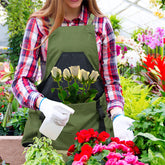How to Restore Garden Tools: A Comprehensive Guide to Bring Your Tools Back to Life
Table of Contents
- Introduction
- Assessing Your Garden Tools
- Gathering Materials and Tools for Restoration
- Preparing Your Garden Tools for Restoration
- Restoring the Wooden Tool Handles
- Sharpening and Protecting Metal Parts
- Reassembling and Storing Your Garden Tools
- Maintenance Tips for Longevity
- Conclusion
Introduction
Do you remember the last time you reached for your trusty garden tools, only to be met with rusted edges and splintered handles? It's a common plight for many gardeners, and it can feel disheartening. According to recent studies, over 70% of gardening enthusiasts have encountered wear and tear on their tools, often leading to frustration and decreased productivity in the garden. Restoring these essential implements not only extends their lifespan but can also enhance your gardening experience, allowing you to connect more deeply with the earth.
At Garden Greenland, our journey began with a passion for the earth and a commitment to redefine the home gardening experience. We believe everyone deserves to feel connected to nature, and restoring your garden tools is a beautiful way to embrace that connection. This blog post aims to guide you through the process of restoring your garden tools, ensuring they are ready for every planting season.
By the end of this guide, you will understand the necessary steps to assess the condition of your tools, gather the right materials, and execute effective restoration techniques. We’ll cover everything from cleaning and removing rust to oiling wooden handles for protection. Our approach emphasizes the importance of using premium gardening products, like those found in our Garden Tools Collection, to enhance your gardening experience.
Let’s embark on this journey together, exploring how to restore your garden tools and keep them in optimal condition for years to come.
Assessing Your Garden Tools
Before diving into the restoration process, the first step is to assess the condition of your garden tools. This involves a thorough inspection of each tool to identify signs of wear and tear, which can range from minor surface rust to more significant structural damage.
Identify Signs of Wear and Tear
Start by visually inspecting your tools. Look for:
- Rust: This is often the most noticeable issue, appearing as orange or brown patches on metal surfaces.
- Wood Condition: Check for splintering, cracks, or rotting in wooden handles. A clean, smooth handle feels comfortable in your hand and allows for better control during use.
- Loose Parts: Examine any joints or connections for looseness or instability. Tools with loose handles can be dangerous to use.
- Sharpness of Blades: Dull blades can make gardening tasks more difficult and less efficient, so it's essential to check the sharpness of your cutting tools.
Determine the Extent of the Damage
Once you've identified any issues, determine how severe the damage is:
- Superficial Damage: Minor rust or cosmetic issues, such as small cracks in the handle, can often be repaired with some cleaning and refinishing.
- Structural Integrity Issues: If a tool has a broken handle or significant rust that compromises its strength, it may need more extensive repair or even replacement.
By understanding the extent of the damage, you can make informed decisions about whether to repair or replace your tools, helping you prioritize which ones need immediate attention.
Gathering Materials and Tools for Restoration
Now that we’ve assessed our tools, it’s time to gather the necessary materials and tools for restoration. Having everything on hand will make the process smoother and more efficient.
Essential Supplies for Garden Tool Restoration
Here’s a list of essential supplies you will need:
- Cleaning Supplies: Soapy water, a stiff brush, and a non-abrasive sponge.
- Rust Removal Tools: Steel wool or a wire brush for removing rust, and rust remover if necessary.
- Sanding Materials: Sandpaper (fine and medium grit) for smoothing wooden handles.
- Wood Filler: To repair any cracks or holes in wooden handles.
- Protective Finishes: Linseed oil or tung oil to nourish and protect wooden handles.
- Oiling Materials: Mineral oil or WD-40 for metal components.
- Protective Gear: Gloves and safety goggles to protect yourself during the restoration process.
Additional Tools You May Need
Having the right tools can make a significant difference during the restoration process:
- Screwdrivers and Wrenches: For disassembling tools that require thorough cleaning.
- Utility Knife: Useful for scraping off old finishes or removing splintered wood.
- Clamps: To secure tools while working on them.
- Putty Knife or Spatula: For applying wood filler or smoothing finishes.
With these materials and tools at your disposal, you're well-equipped to tackle the restoration of your garden tools.
Preparing Your Garden Tools for Restoration
Before getting into the nitty-gritty of restoring your tools, it’s essential to prepare them properly. This ensures that the restoration process is effective and yields excellent results.
Cleaning the Tools
Begin by thoroughly cleaning your tools. Remove any dirt, mud, or debris using soapy water and a stiff brush. Pay special attention to the crevices, as dirt can hide in hard-to-reach areas. This cleaning process not only helps you identify damage more easily but also prepares the surface for further restoration.
Removing Rust
After cleaning, inspect the metal parts for rust. For minor rust, use steel wool or a wire brush to scrub away the corrosion gently. If the rust is more severe, consider using a rust remover product following the manufacturer's instructions. After removing rust, rinse the tools with clean water and dry them thoroughly to prevent further corrosion.
Sanding Down Wooden Handles
Next, focus on the wooden handles. Sand them down using medium-grit sandpaper to remove any roughness or splinters. This process helps to open the pores of the wood, allowing any protective finishes to penetrate better. After sanding, switch to fine-grit sandpaper for a smooth finish.
Applying Wood Filler
If you notice any cracks or holes in the wooden handles, apply wood filler according to the product instructions. This step is crucial for restoring the integrity of the handles. After the filler has dried, sand the area flush with the rest of the handle.
Restoring the Wooden Tool Handles
With your tools cleaned and prepared, it’s time to restore the wooden handles. This step significantly enhances the comfort and durability of your tools.
Applying Protective Finishes
Once the wooden handles are clean and sanded, it’s time to nourish and protect them. We recommend using linseed oil or tung oil, both of which penetrate deep into the wood fibers, providing moisture and protection from the elements.
- Choose Your Oil: Decide between raw or boiled linseed oil. Boiled linseed oil dries faster and often contains additives to accelerate curing.
- Application: Use a soft cloth to apply a generous amount of oil to the handle, working it into any cracks or splits. Allow the oil to soak in before wiping away any excess.
- Curing Time: Let the oil cure according to the manufacturer's instructions, typically 24 hours. For enhanced protection, consider applying multiple coats, allowing each coat to dry thoroughly before adding the next.
Sharpening and Protecting Metal Parts
Now that the wooden handles are restored, let's turn our attention to the metal components. Proper maintenance of metal parts is essential for the functionality and longevity of your tools.
Sharpening the Blades and Edges
Sharp tools not only perform better but are also safer to use. Follow these steps to sharpen the blades of your garden tools:
- Choose Your Sharpening Tool: A whetstone or sharpening file works well for most garden tools.
- Angle the Blade: Maintain a consistent angle (usually about 20 degrees) while sharpening.
- Sharpen the Edges: Move the sharpening tool along the blade in a smooth motion, applying even pressure. Repeat until the edge feels sharp and smooth to the touch.
Applying Rust Preventive
After sharpening, it’s crucial to protect your metal parts from rust:
- Use mineral oil or WD-40 to coat the metal surfaces lightly. This protective layer helps prevent moisture from causing rust.
- For long-term storage, consider using a rust preventive spray specifically designed for garden tools.
Reassembling and Storing Your Garden Tools
Once all restoration tasks are complete, it's time to reassemble your tools (if disassembled) and store them properly. Proper storage is vital for maintaining the quality of your tools.
Reattaching Wood Handles
If you had to remove the wooden handles, reattach them securely, ensuring all screws and fittings are tight. This step is essential for ensuring the structural integrity of your tools.
Storing Tools Effectively
Store your garden tools in a clean, dry place, ideally hanging them to keep them off the ground. Avoid storing them in damp or humid areas, as this can lead to rust and deterioration. Organizing your tools in a designated shed or garage can also help prolong their lifespan.
Maintenance Tips for Longevity
Regular maintenance is crucial to keeping your garden tools in optimal condition. Here are some proactive measures you can take:
- Clean After Each Use: After gardening, wipe down your tools to remove dirt and sap. This simple step prevents rust and buildup.
- Inspect Regularly: Make it a habit to inspect your tools for signs of wear or damage, addressing any issues immediately.
- Oil and Sharpen Periodically: Regularly apply oil to metal parts and sharpen blades to maintain peak performance.
Conclusion
Restoring your garden tools is not just about aesthetics; it's about extending their lifespan and improving your gardening experience. At Garden Greenland, we are committed to helping you embrace your green thumb with high-quality gardening products designed to enhance your connection with nature. By following the steps outlined in this guide, you can successfully restore your tools and keep them in excellent condition for years to come.
FAQ Section
1. How often should I restore my garden tools? We recommend assessing your tools at least once a season. Depending on their usage, you may need to restore them more frequently.
2. Can I use household items to remove rust? Yes! Many gardeners successfully use vinegar, baking soda, or even cola to remove rust. However, for best results, consider investing in quality rust removers.
3. Is it necessary to oil my tools? Absolutely! Oiling helps prevent rust and keeps wooden handles conditioned, enhancing comfort during use.
4. What is the best way to store garden tools? Store them in a dry, cool place, preferably hanging. This prevents moisture accumulation and makes tools easy to access.
5. How can I tell if my tools are beyond repair? If a tool has significant structural damage or rust that compromises its function, it may be time to replace it. Regular inspections can help you make these assessments.
By maintaining your garden tools diligently, you not only enhance their functionality but also elevate your overall gardening experience. Together, let’s keep our tools in top shape, ensuring that our connection to the earth remains strong and fulfilling. For premium gardening products, explore our Garden Tools Collection and equip yourself for success in every gardening endeavor.









